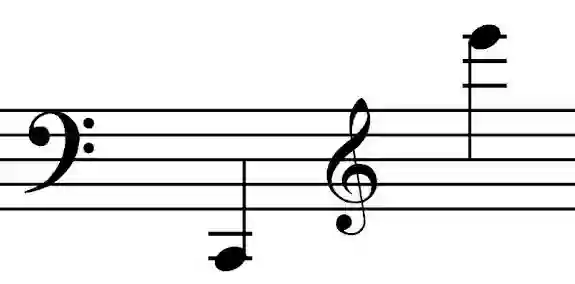Notation and sound generation of the Cello » Philipp Dangas
Notation and sound generation from the cello [violoncello]
The cello has 4 strings. The retuning of the string(s) (scordatura) is used, but this procedure is not recommended here.
In the score of „Salome“ (by Richard Strauss )), for example, the contra B1 is required twice from the cello. What has been said about string instruments applies to the generation of sound from the cello, with the following special features: Since the strings of the cello are about twice as long as those of the violin and this results in significantly greater fingering distances for the individual semitones and whole tones, the cello must have a different finger technique than on the violin and the viola.
The so-called half position is rarely used on the violin, as it is on the cello. From the 7th position onwards, the so-called thumb attachment is used, i.e. the thumb is placed at right angles on the string at the point reserved for the 1st finger according to the previous fingering technique and presses it down firmly on the fingerboard. The thumb takes on the function of an “artificial saddle”.
The thumb attachment is also used to perform the octave double stop. The flageolet is performed on the cello according to the same principles as on the violin. With the artificial flageolet, as with the violin, the fourth grip is usually used (the fifth grip, etc., can of course also be used). the usual character "o" is placed over the flageolet sound. The bass clef, tenor clef and treble clef are used for general cello notation. With regard to bowing technique (dynamics, articulation, barbed notches), what was said about the violin applies accordingly.
[download size: 768 kilobytes]
Table summary of cello range
The following table shows the pitch range of the four strings of the cello shown. The string designation and string tuning is also mentioned.

The range of the cello in large scale
From C [major octave] to e3 [3rd octave]
Internal search function
| Name | Value | Delete |
|---|